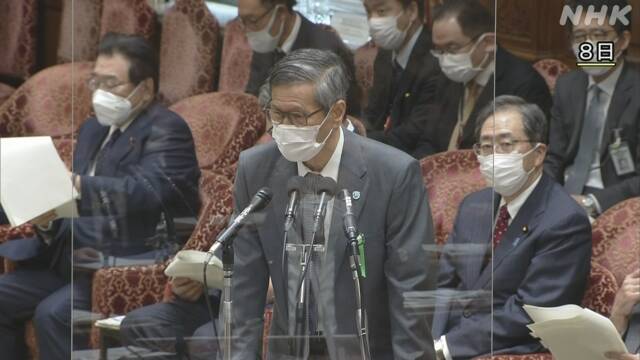The epidemic "6th wave" due to the Omicron strain of the new coronavirus has become an unprecedented number of infected people.
The pace of increase is slowing down, and while there is a view that the peak of infection is near, the burden on the medical system is becoming serious.
Infection spread on an inexperienced scale
Due to the influence of the Omicron strain, which spreads rapidly, at the time of the year-end and New Year holidays, the spread of infection has occurred in Japan on a scale that has never been experienced before.
Comparing the number of newly infected people in one week with the previous week in the NHK summary, in early last month,
▽ Okinawa prefecture was 25.83 times (1/9) compared to the previous week, and
▽ Tokyo was 10.27 times (1 ).
/ 10),
▽ 13.21 times (1/10) in Aichi prefecture,
▽ 8.92 times (1/9) in Osaka prefecture, and
the pace is increasing nearly 10 times in a week in various parts of the
country. It was 1/9).
After that, the pace of increase gradually slowed down, and according to the materials presented at the expert meeting of the Ministry of Health, Labor and Welfare, the number of newly infected people in one week as of the 8th
was 1.19 times that of the previous week.
▽ Tokyo is 1.21 times,
▽ Osaka prefecture is 1.15 times,
▽ Aichi prefecture is 1.13 times, etc.
Although the pace of increase has slowed, many areas such as Tokyo and Osaka have not yet entered a declining phase, and the average number of new infections per day in Japan exceeds 90,000 per week. increase.
Although the number of infected people is decreasing ...
On the other hand, in the three prefectures of Okinawa, Hiroshima, and Yamaguchi, where the "Priority Measures to Prevent Spread" were applied from the 9th of last month before other areas, the number of infected people began to decrease from the end of last month to the beginning of this month. As of the 8th, the number of newly infected people in one week
was 0.67 times in Okinawa prefecture
, 0.81 times in Hiroshima prefecture,
and 0.85 times in Yamaguchi prefecture
compared to the previous week .
However, for example, in Okinawa Prefecture, the number of infected people in the younger generation is decreasing, but the rate of decrease is slower than the speed of increase due to clusters occurring in facilities for the elderly, etc. Due to the increase in the number of people, the proportion of people who are getting sick is increasing, and the medical system continues to be in a difficult situation.
Regarding this, Shigeru Omi, chairman of the government subcommittee, said at the House of Representatives Budget Committee on the 8th that "the speed of increase is gradually slowing down in many prefectures and peaking out is possible" and the "sixth wave" peaked. After pointing out the possibility of exceeding, "The possibility is that it does not decrease sharply, but gradually decreases or rises. In the worst case, it is possible that it does not decrease easily (infection). ".
Also, among experts, if the decrease is gradual even if it exceeds the peak, the number of infected people will remain high, and the welcome and farewell party in March and April, graduation, and admission season will be reached again with people. It has been pointed out that there is a risk of increasing contact opportunities.
Serious medical care provision system is tight
Even more serious is the tightness of the medical care provision system.
Looking at the percentage of newly infected people by age group from the data of the Ministry of Health, Labor and Welfare's system "HER-SYS" that aggregates information on infected people, the percentage of people in
their 20s increased from 23.7% last month to this month. While it has decreased to 15.9%, it has
increased from 10.7% last month to 14.2% this month for people in their 60s and above.
The Omicron strain is said to have a higher rate of mild illness than before, but it is said that the risk of aggravation is relatively high in the elderly and those with underlying diseases, and the number of elderly infected people increases. Is expected to increase.
The number of seriously ill people nationwide was 89 and less than 100 as of the 8th of last month, but it exceeded 1000 on the 4th of this month and 1141 as of the 8th.
In addition, the number of deaths was reported to be 159 in one day on the 8th, and the number per day was significantly higher than the peak of the "fifth wave" of infection last summer when the Delta strain spread.
In the spread of infection so far, the number of severely ill and dying people has peaked several weeks after the number of infected people peaked, and there is a possibility that the number of severely ill and dying people will continue to increase for the time being. It has been with.
Regarding this, Chairman Omi said at the House of Representatives Budget Committee on the 8th, "One of the most important issues facing us now is that the number of seriously ill and dead people is gradually increasing, especially among the elderly. If infection control measures such as facilities for the elderly are not thoroughly implemented, the number of severely ill people may continue to increase for a while. Regarding infection control measures for elderly facilities, cooperation with surrounding medical institutions and communities is extremely important. It is in. "
At an expert meeting of the Ministry of Health, Labor and Welfare, it was pointed out that elderly people and people with underlying illnesses may have their original illness worsened due to infection even if the new corona does not make them serious. The heavy load may continue.

